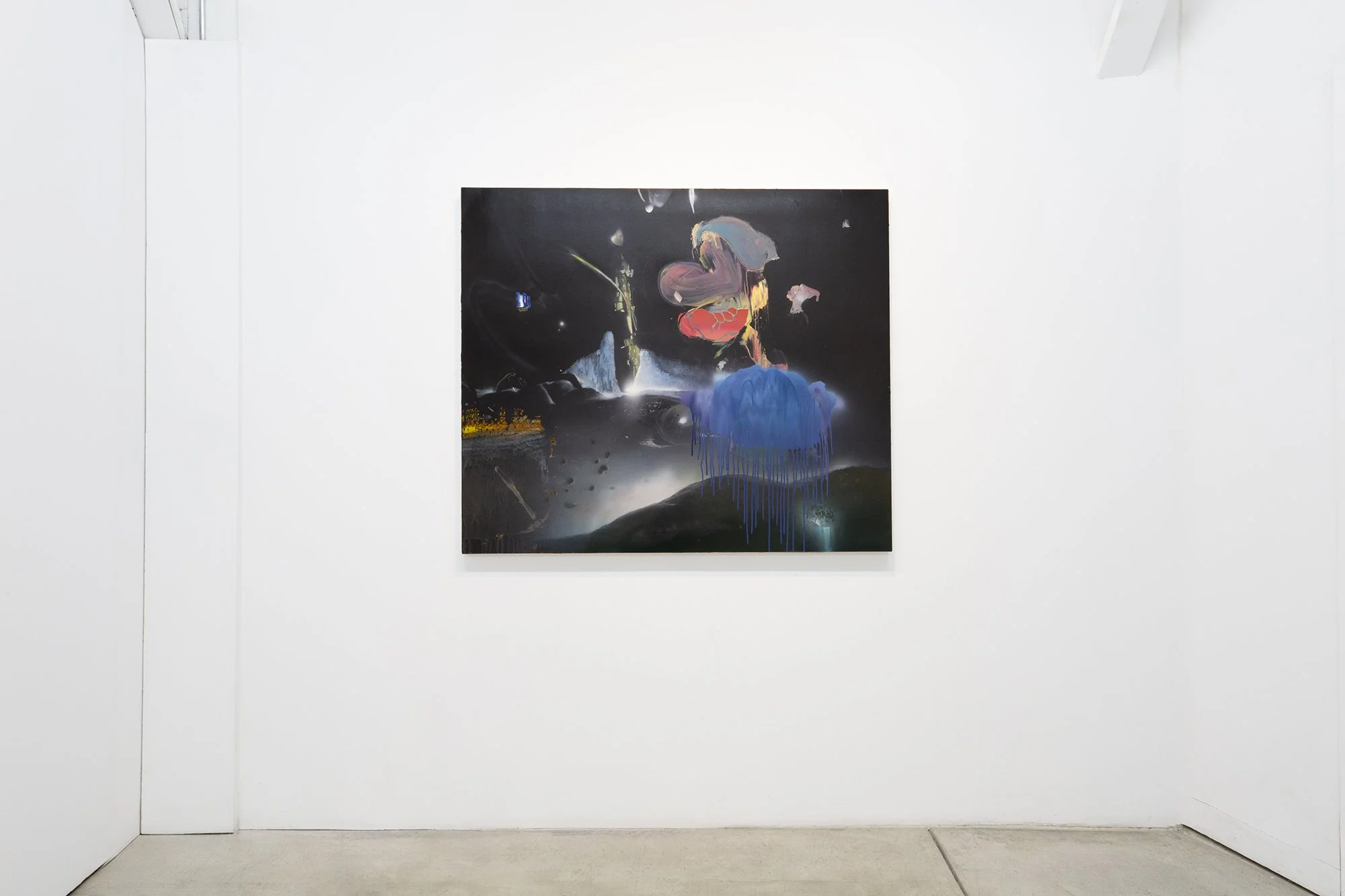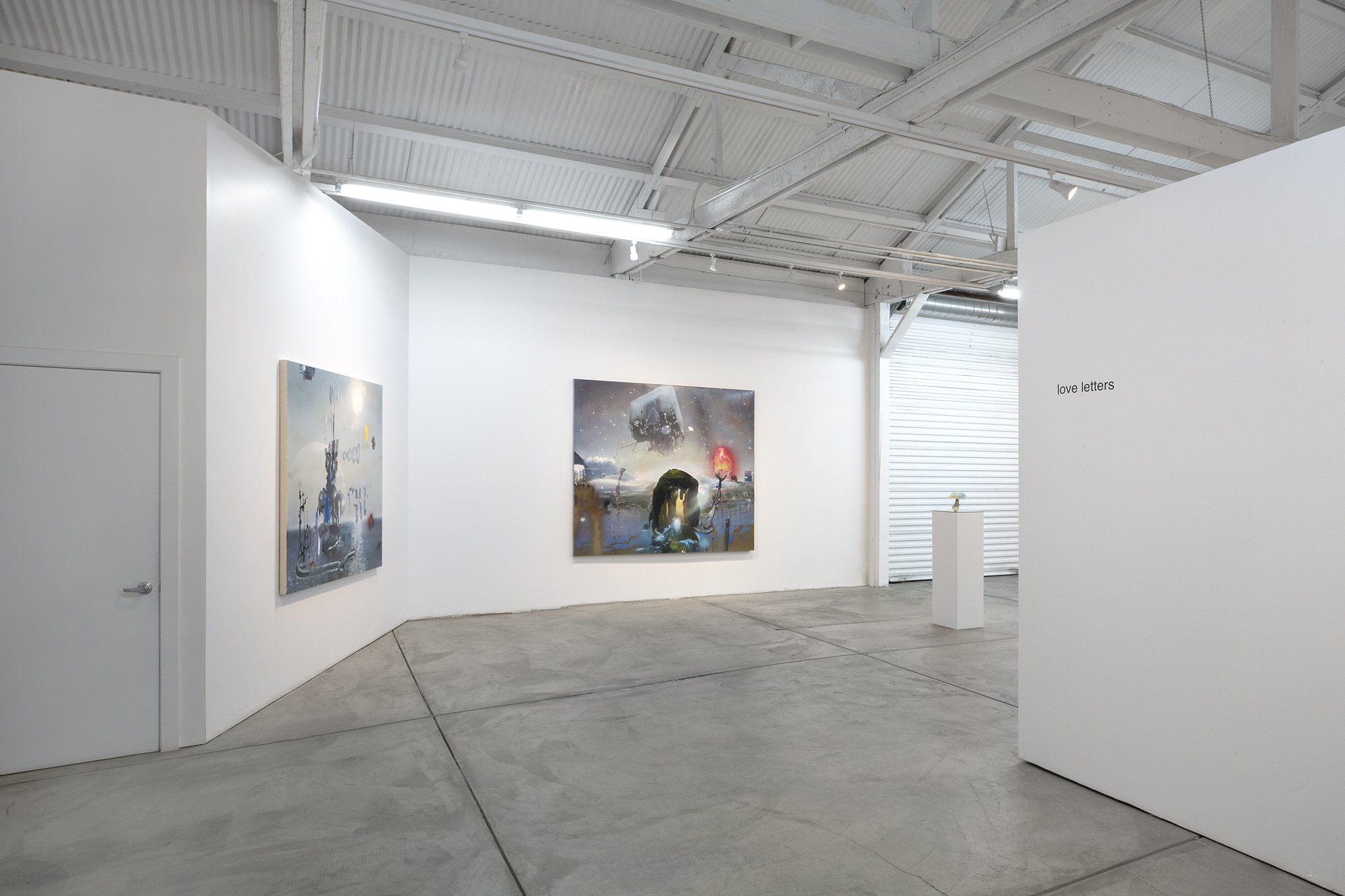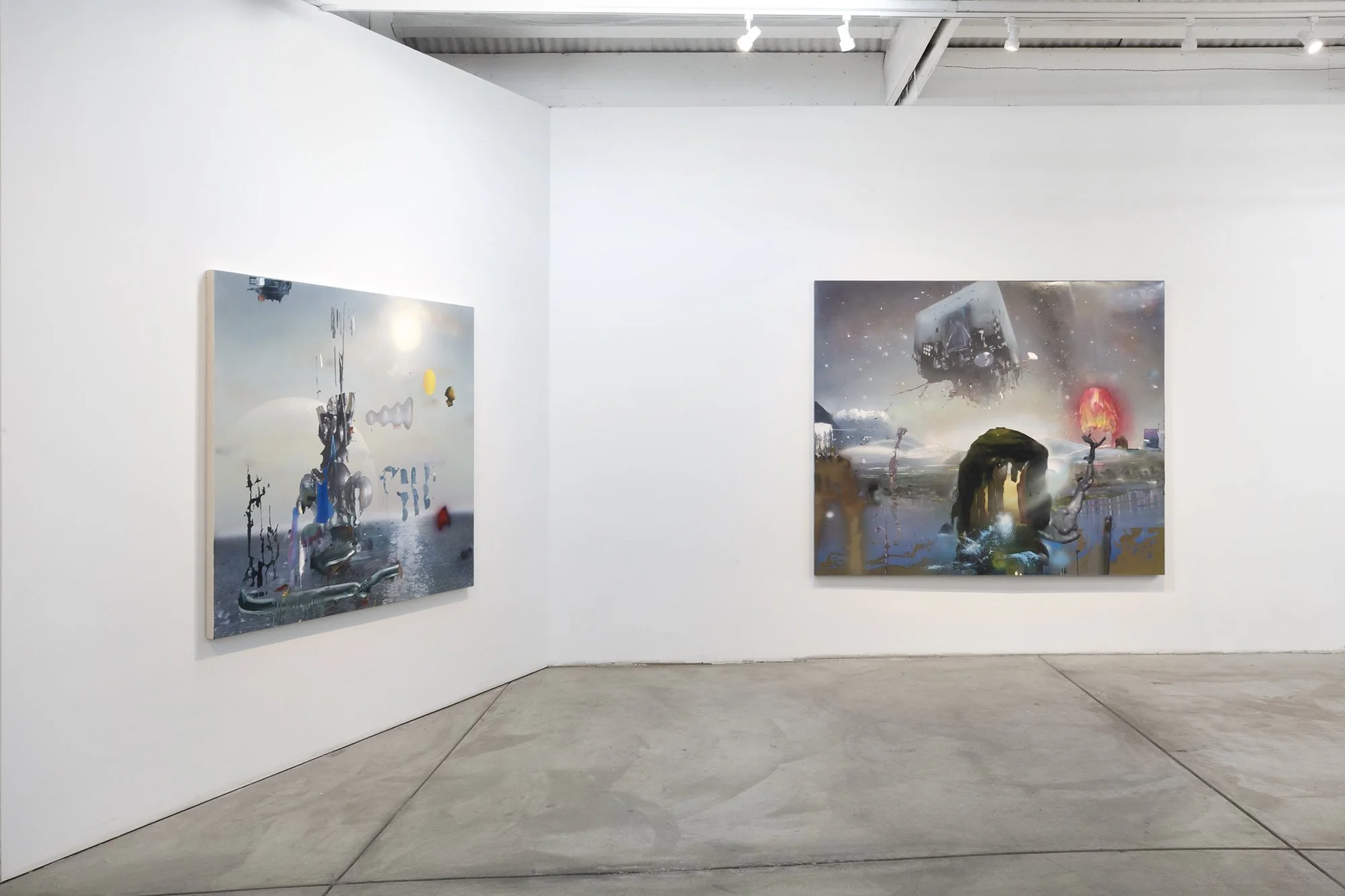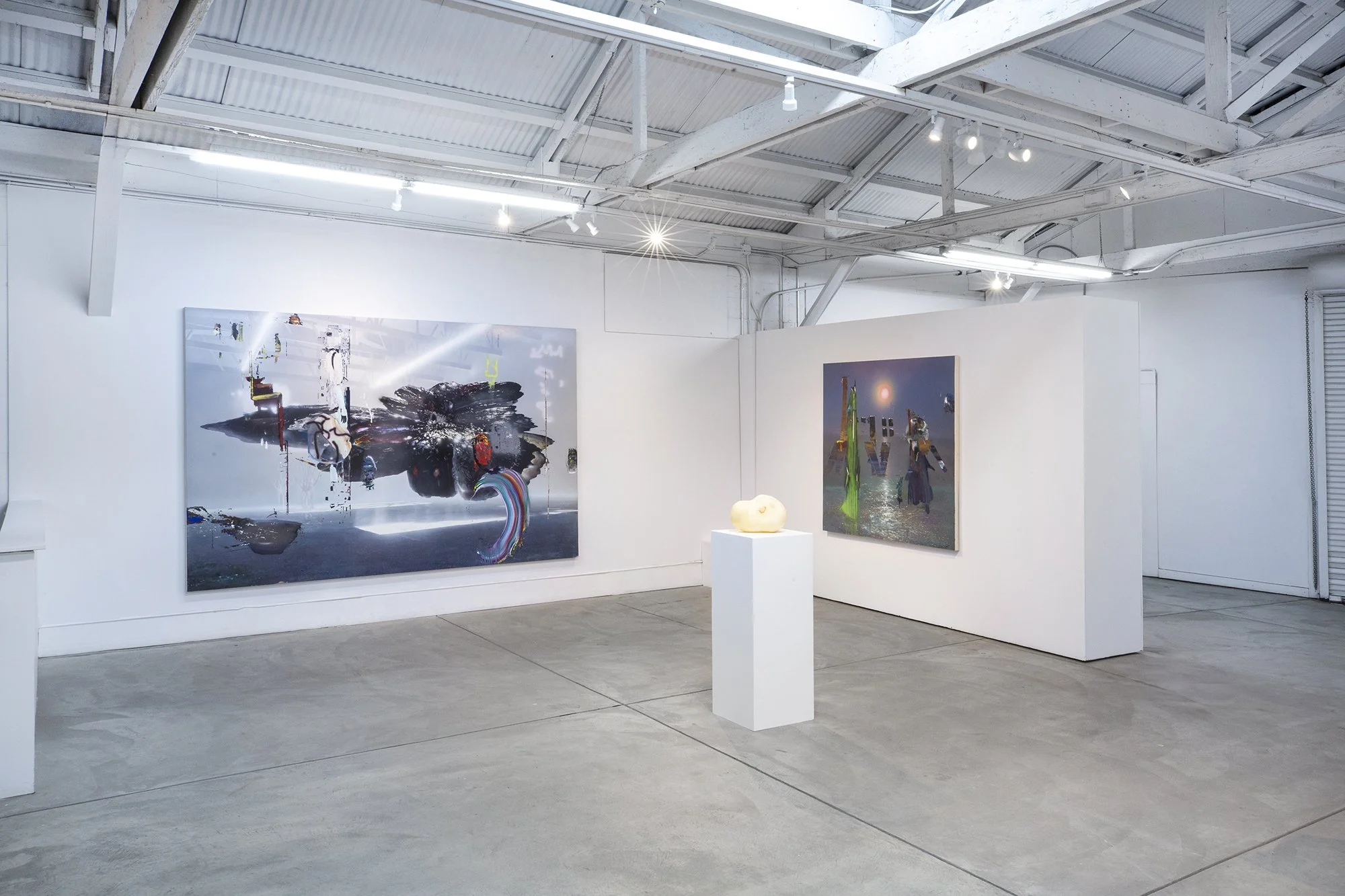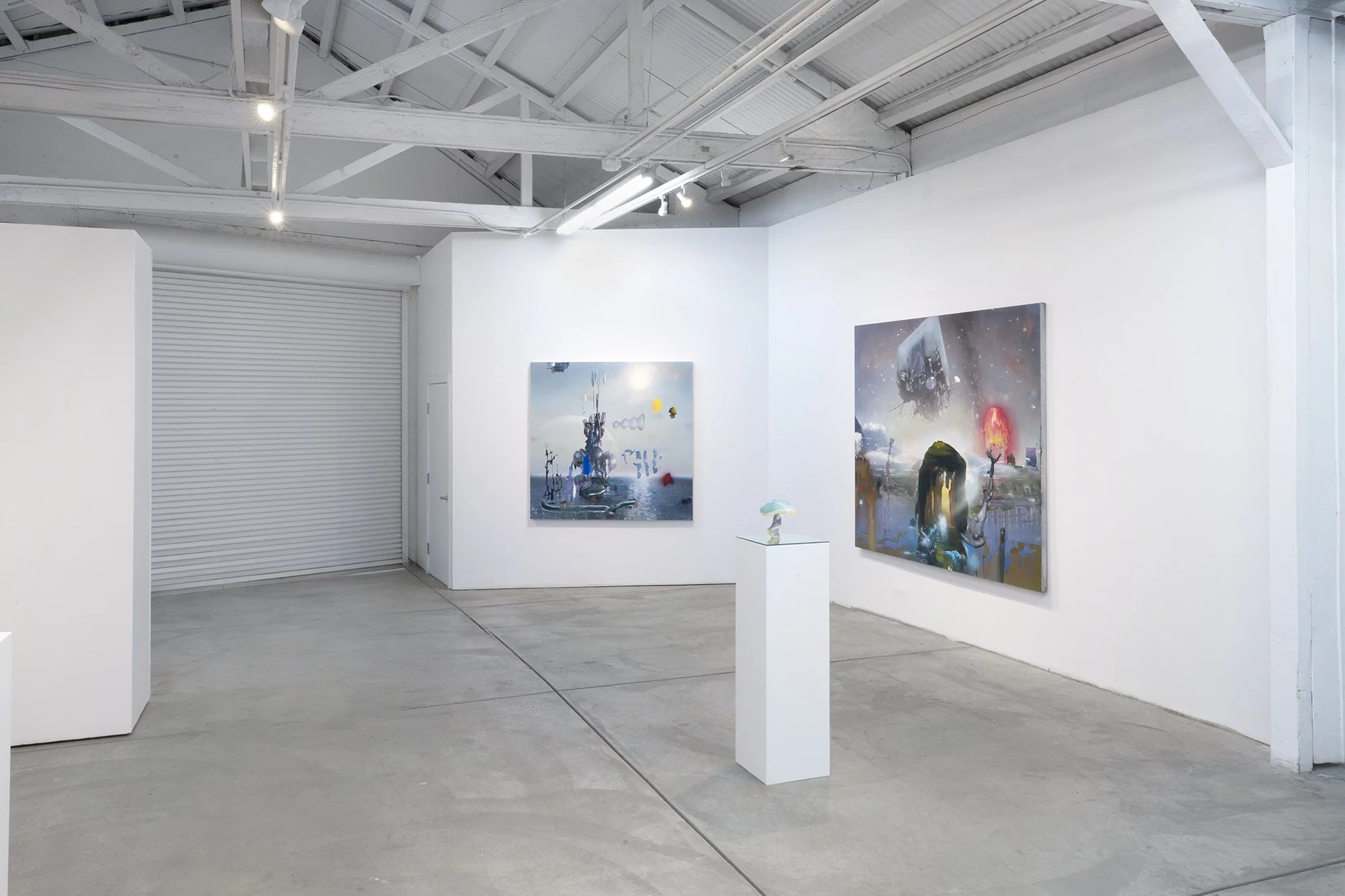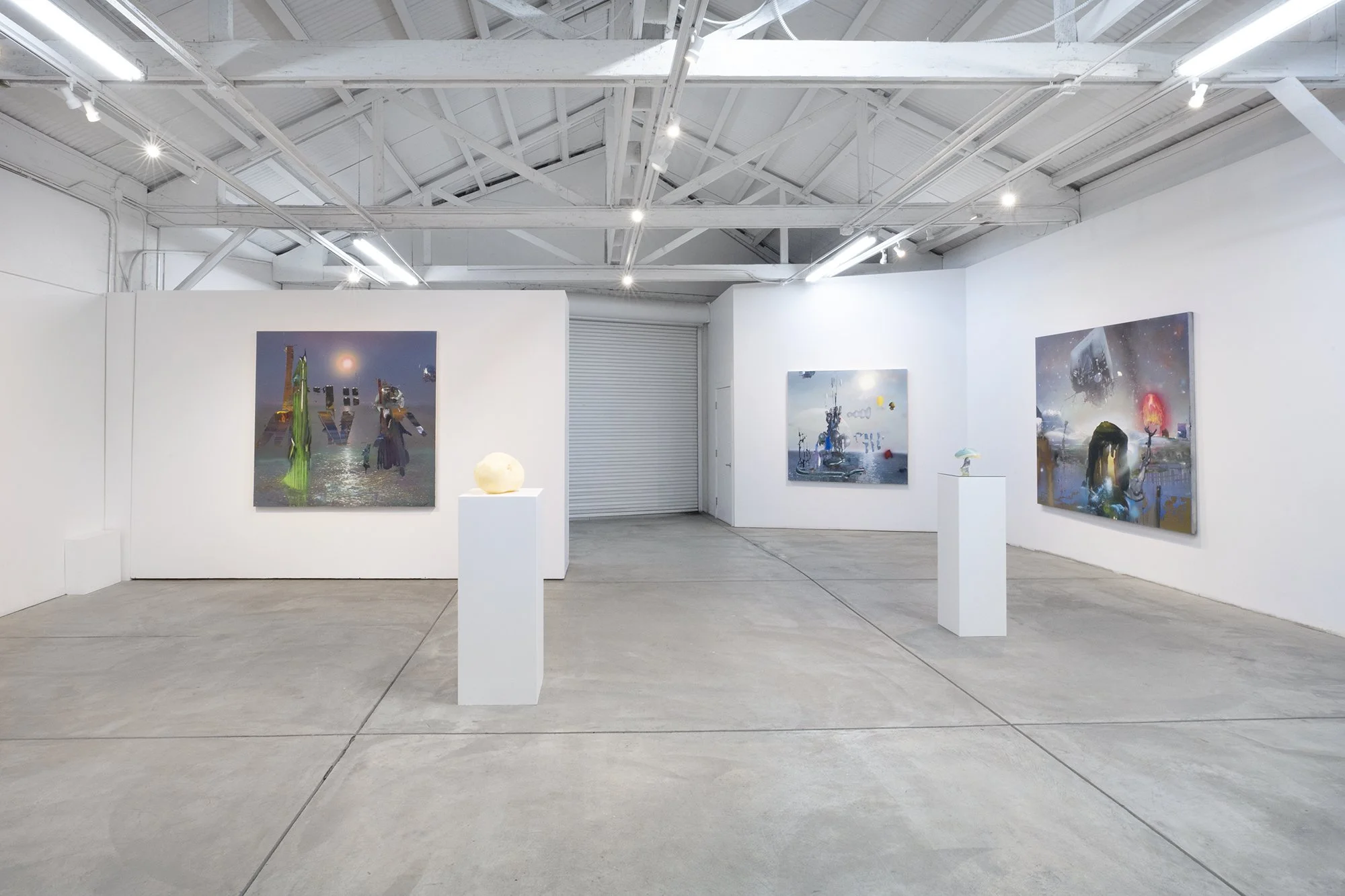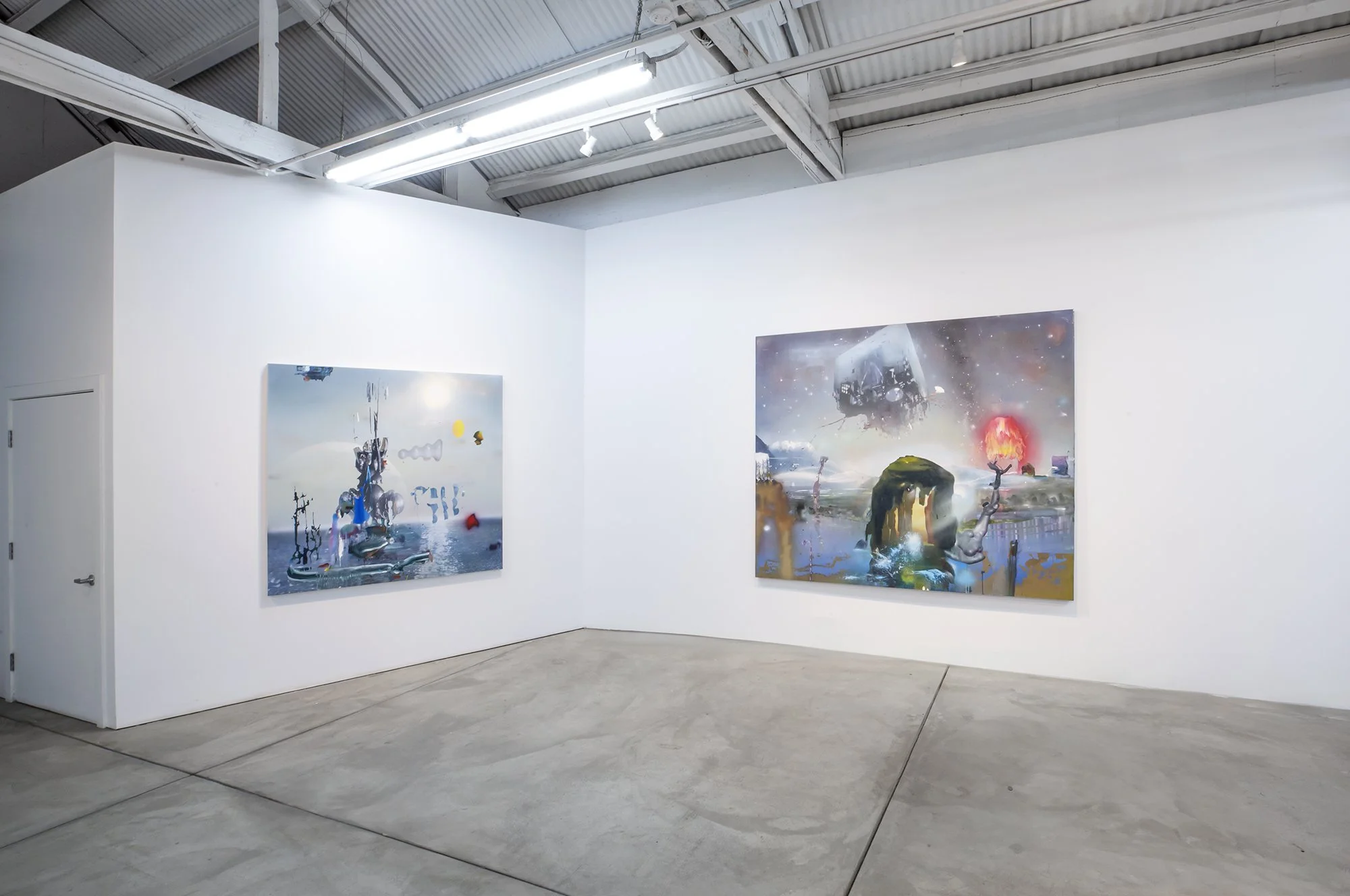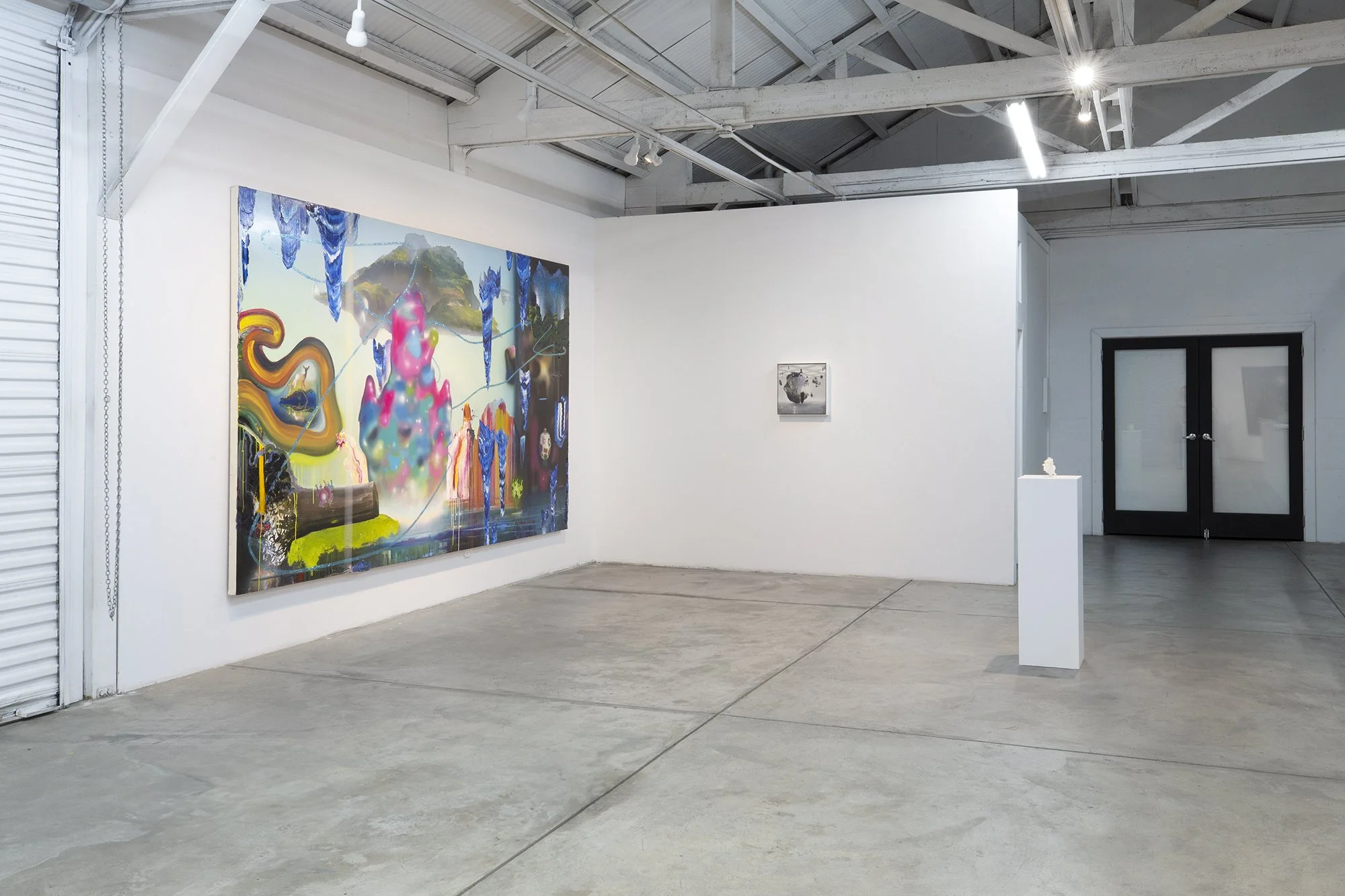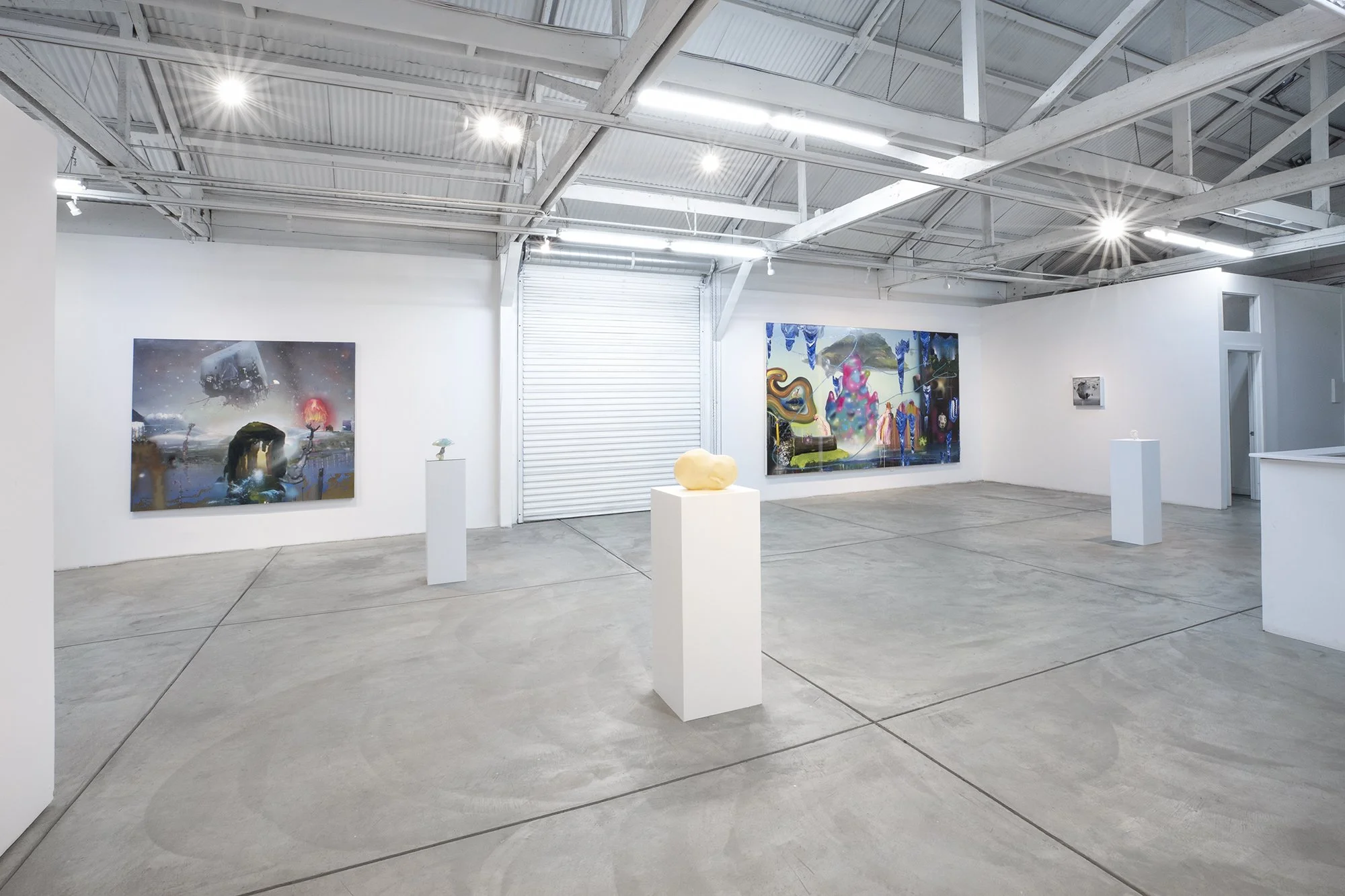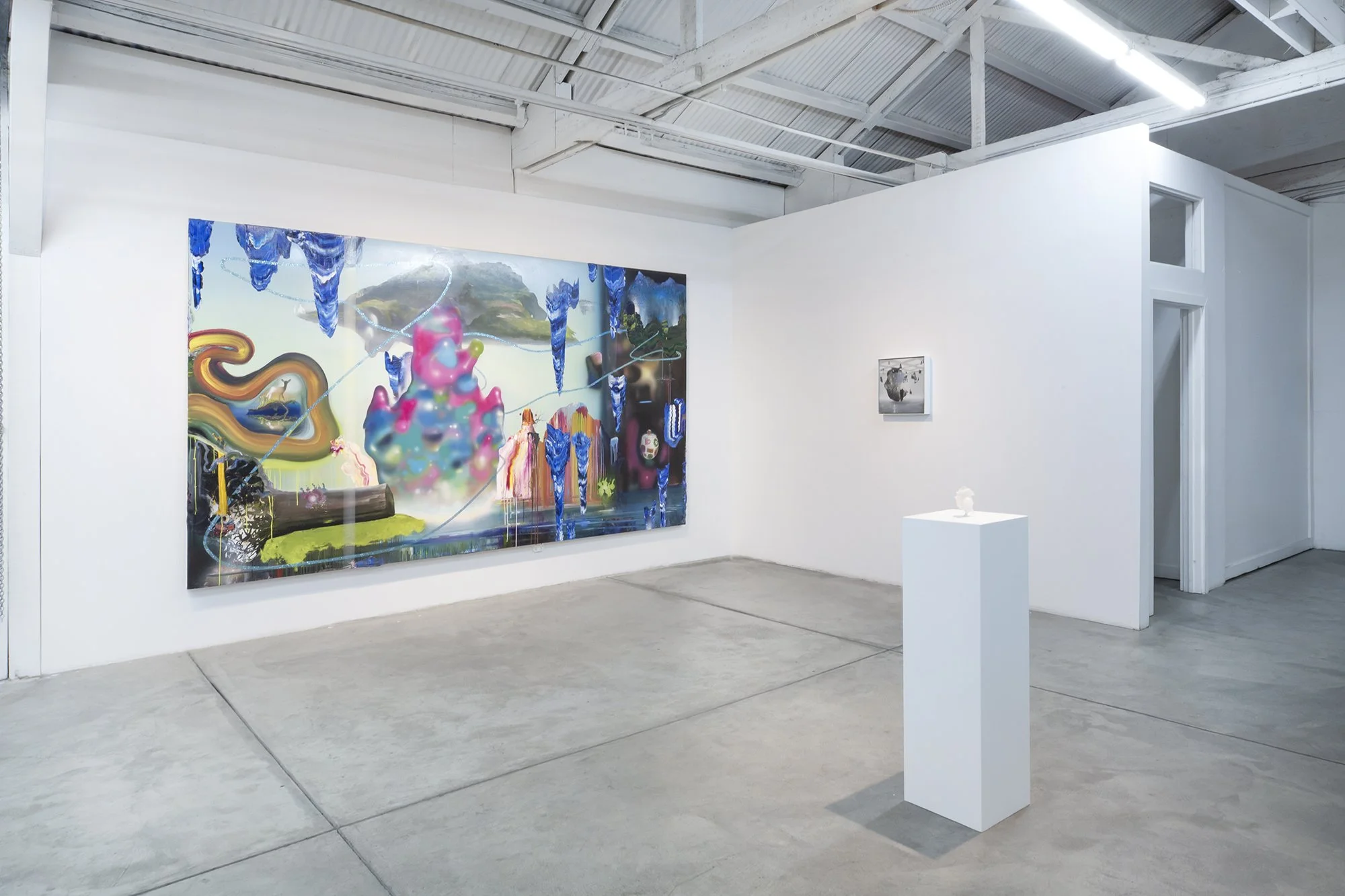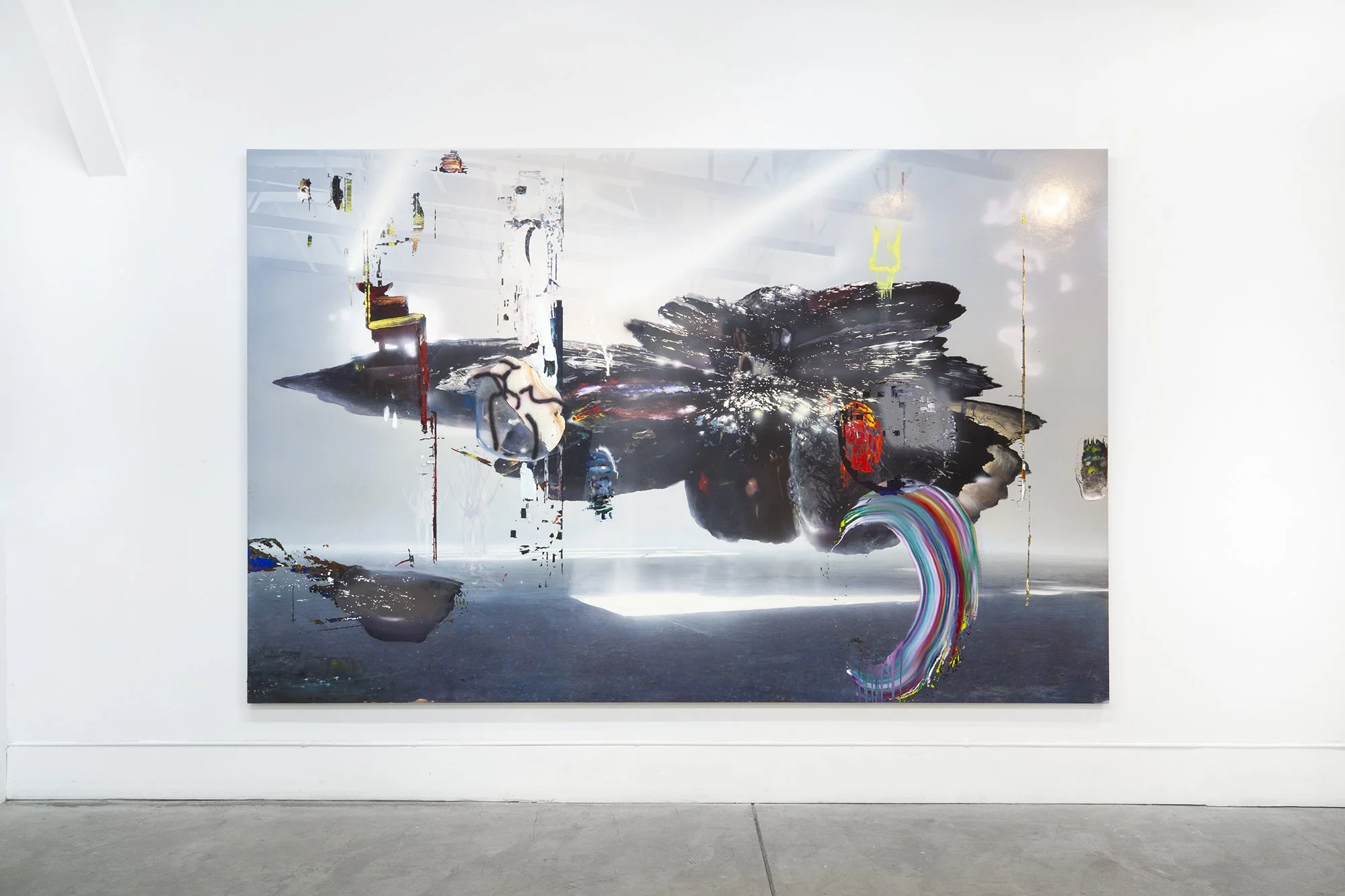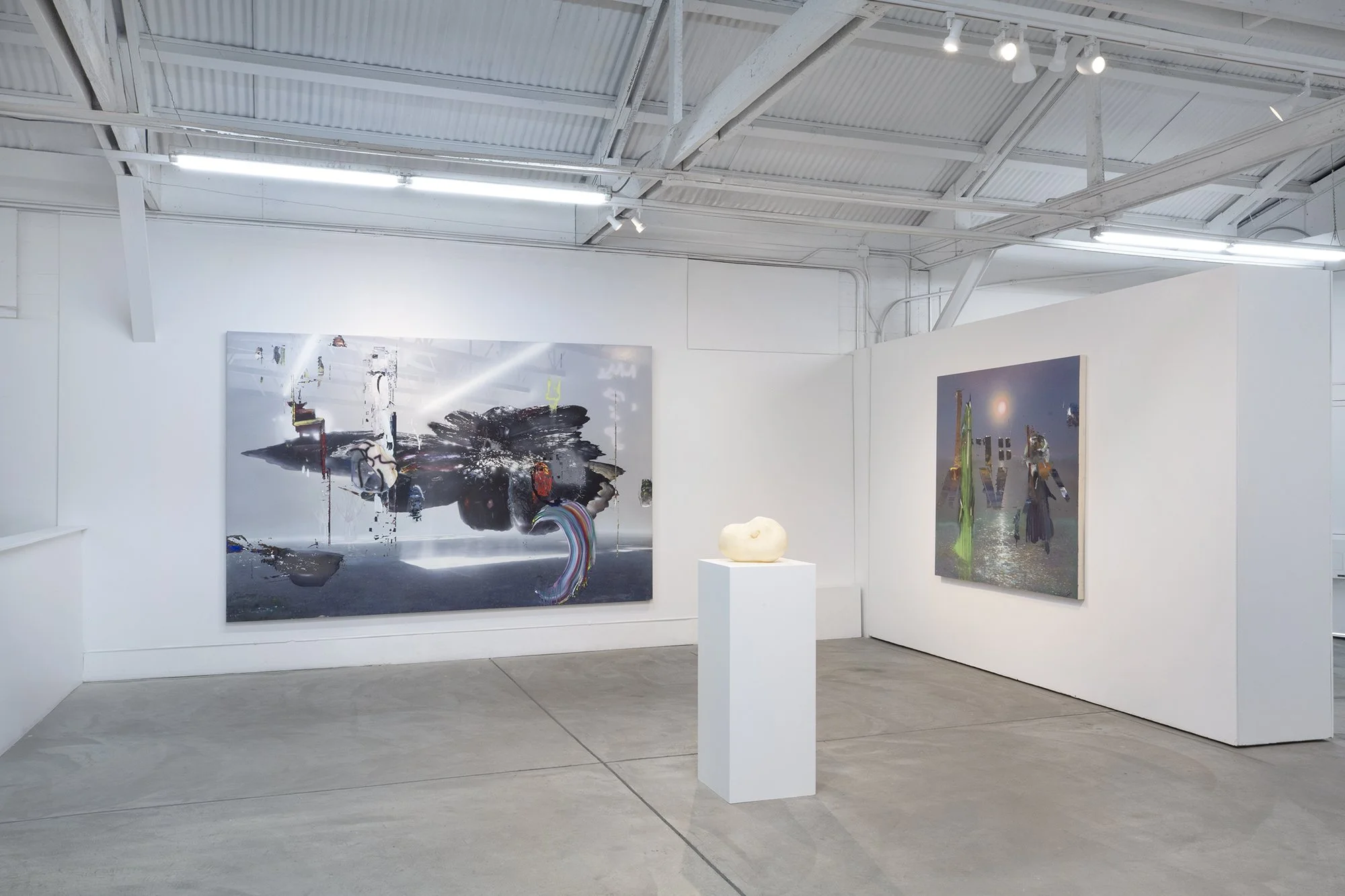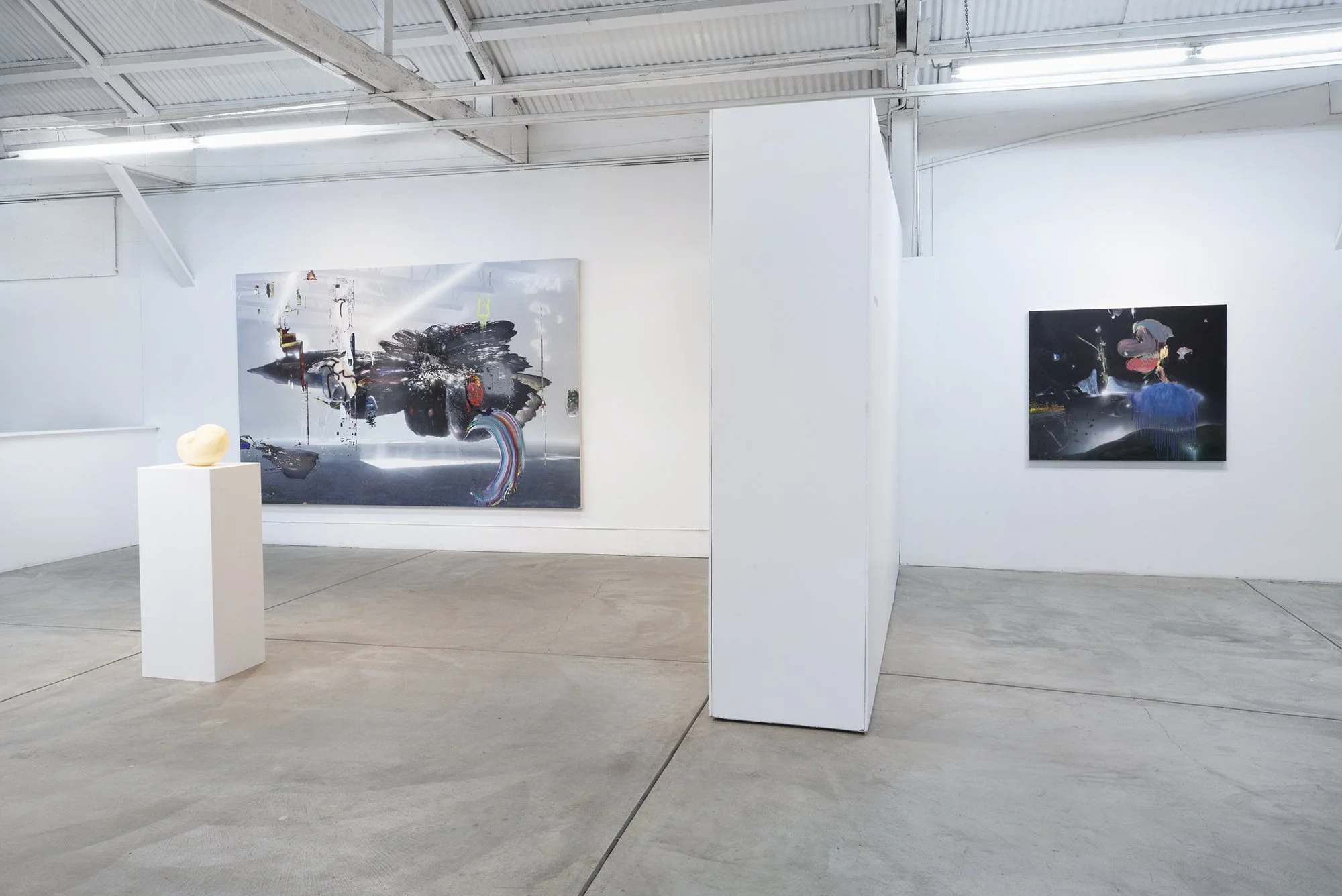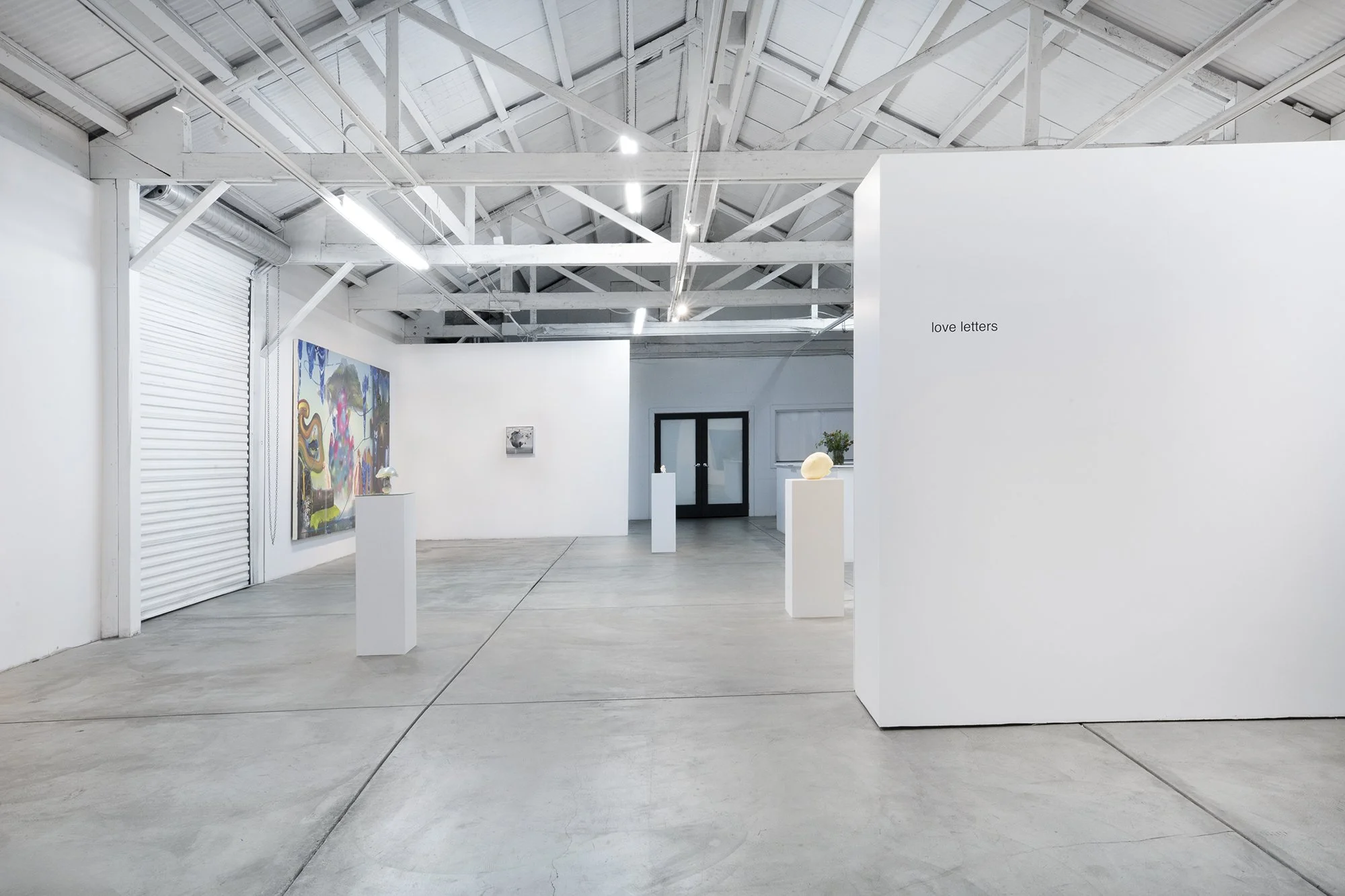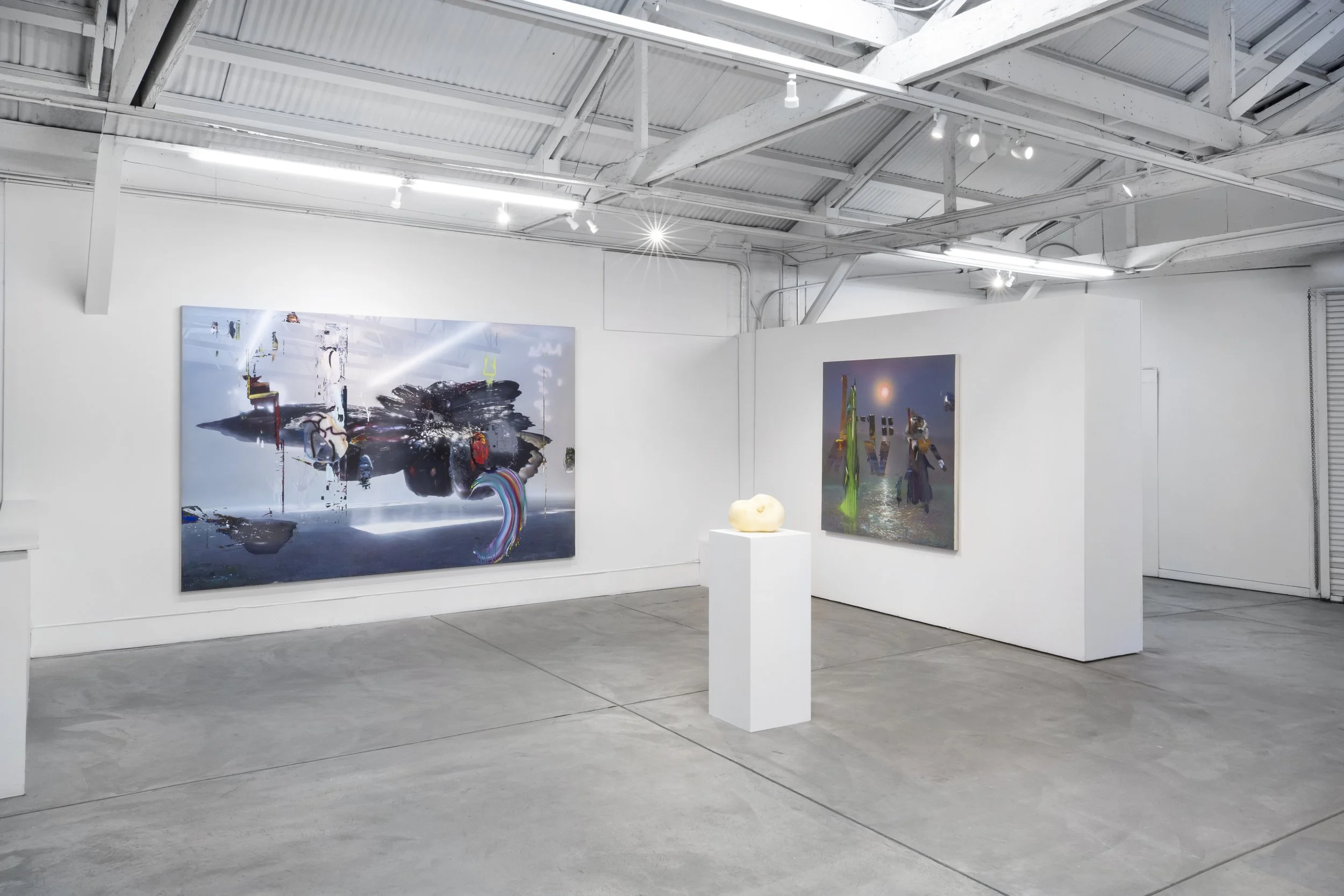
Tom LaDuke love letters
November 22 - December 27, 2025
Tom LaDuke
love letters
November 22 - December 27, 2025
What we need is more people who specialize in the impossible.
Theodore Roethke
I first encountered the work of Tom LaDuke in the spring of 2001. I had moved to Los Angeles in August of 2000, having left a full-time teaching position in Portland, Oregon, to pursue the dream of making a name for myself in the Los Angeles art world. At the time I was making the rounds trying my best to case the scene, excited if not daunted, and beginning to make some sense of the non- linear and chaotic maze of galleries, alternative spaces, and museums.
I wandered into Angles Gallery (then on Main Street in Santa Monica) to see the work of Kelly McLane, one of the few artists whose work I did know and admired. It was a mid-week afternoon and a bit slow, and after spending a good deal of time with Kelly’s work, one of the gallerists (David, I think) came over and we chatted about the art and other shows I might want to visit. As the conversation paused, he eventually said, “Do you want to see something really amazing?” I said I did, and he ushered me to the back office and pulled out some 4 x 5 slides of work by LaDuke. His predicted reaction on my part proved to be accurate. I was amazed, though, looking back, there was a longer and more nuanced list of describable reactions: reverence, shock, awe, but mostly a strange recognition; recognition of a poetics that somehow seemed uncannily familiar while remaining unique in describing the sometimes beautiful and sometimes terrifying aspects of the world and our place in it. This was an artist I intended to keep track of. And so I did.
Since that initial viewing, I have closely followed the development of LaDuke’s work, and with each passing year, I am increasingly convinced of a grandness in Tom’s vision—and more specifically, what I consider to be a visionary sensibility. I do not use this term lightly. That I call LaDuke a friend and even a close friend has little bearing on this feeling. I realize as I write this that I am no journalist or critic in the widely understood sense of the term. I’m not really interested in offering objective criticism or analysis of the work; rather, the platform from which I write is one of poetic wonder. And from this platform, I begin to see and understand it in three somewhat related categorical parts: I) The Uncanny, II) The Field, and III) Reportage Subverted.
I. The Uncanny
LaDuke himself once told me that one of his methods or ways of beginning is to imagine an impossible object or even phenomenon, and then immediately proceed to manifest it as an object. In his hands, what could come into existence and then remain as a sort of parlor trick becomes transcendentally layered both through extreme difficulty of technique and through a sense of deep vulnerability. An example of this is one of the works I remember David from Angles Gallery showing me: an approximately 15 ft tall photorealistic sculpture of an antenna tower titled “Enrico Fermi” made from innumerable pieces of mechanical pencil lead and superglue. The technical absurdity of the premise could remain mired in a shallow (if impressive) bravado, but what I saw even in the very faint 4 x 5 slide was an object of delicate beauty and sublime grandeur and vulnerability. This double quality of the beautiful and the strange/uncanny is something consistently inherent in all his sculpture, drawing, and painting. This calls to mind the French Symbolist poet Charles Baudelaire:
“The beautiful is always strange…it always contains a touch of strangeness, of simple unpremeditated and unconscious strangeness, and it is that touch of strangeness that gives it its particular quality as Beauty.”
II. The Field
In his seminal essay on poetry, “On Projective Verse,” the poet Charles Olson proposed that the poet approach a poem as an “open field” that “projects” organically from the poem’s content. This image has affected my view of artists as diverse as John Cage and Jasper Johns. I believe the image is particularly useful in understanding LaDuke’s work as nonhierarchically content laden. The idea that a picture is a field in addition to being a window/stage seems to have allowed artists like Jackson Pollock and Joan Mitchell to create all over surfaces and culminated in minimalist works by Sol Lewitt and Robert Ryman. Every square inch or centimeter of a “field” painting is, from a formal point of view, equal in importance. But LaDuke both embraces this and reinserts narrative concerns. Somehow, he injects traditional content in the form of recognizable spaces/objects/figures with all their accompanying emotional implications, while arranging them and rendering (or not rendering) them in a variety of manners and methods so that it is nearly impossible to label any as focal or even primary. In this way, LaDuke edges toward the rather anarchic stance of the postmodern ironists like David Salle and Julian Schnabel. Yet unlike them, he exhibits none of their seemingly nihilistic apathy. He is, in a sense, a “postmodernist with heart” (if such a character exists). Or, more accurately, he points the way to a sensibility that is expansive and can hold classical values of craft and postmodern attitudes of iconoclasm in the same space. A particularly resonate example of this is the painting, “Now it’s Dark,” in which the artist juxtaposes a sort of crisply edged but simultaneously loose/impasto rendition of the hunters, dogs and trees from the iconic Breughel painting, “Hunters in the Snow.” But the snow is nowhere to be found. Instead, there is a chasm of space filled by a hauntingly faint view of a scene from the iconic David Lynch film, “Blue Velvet.” What could be mere binary/dualistic shadowboxing in the hands of a lesser artist is presented so that both images create an endless series of echoes that touch on fragility, terror, the folly of history, and the fleetingness of images and memory, to name a few. It is a tour de force both in form and content.
III. Reportage Subverted
When the above-mentioned Charles Olson wrote his own modernist epic, “The Maximus Poems,” among the many techniques he employed was the re-telling (or written restaging) of historical documents alongside more lyrical passages. These were the equivalent of found objects in assemblage and painting, or of documentary footage inserted into an otherwise lyrical film sequence (as in the footage of the Soviet Red Army crossing a river accompanied by a heartbreaking piece of Baroque music by Henry Purcell in the incredible film “The Mirror” by Andrei Tarkovsky). In his own inimitable way, LaDuke employs a sort of quotation of facts from various worlds: entertainment, art history, news, culture at large, etc. In his work as a whole, there is a thrilling sense that anything goes- indeed, notions of high and low culture become pulverized so that sources are both recognizable but often mutated in some way (sometimes in multiple ways) so that quotation becomes subverted into a poetic element with equal value to all other elements in a particular work. Further, the power of the original reference remains intact and also holds all new associations gained through mutation and/or subversion. I would argue that this idea is pervasive throughout all his work. But for the sake of clarity here, I cite one particular work, “Flemish Veil,” a free-floating linear sculpture made with human eyebrow and eyelash fragments held together by super glue. These materials recreate the pattern of hairline cracks in the oil painting surface in a panel painting by the Flemish master Petrus Christus from c. 1470 (“Portrait of a Young Woman” in the Gemäldegalerie in Berlin). ”Flemish Veil” is on one hand a document in several senses. It is a record of physical entropy and decay, as well as a sort of indirect record of the sitter, since the cracks loosely form around the shape of the head and upper torso of the subject. Yet the objective report is only a base layer for more subjective sensations and associations. The cracks that in reality are literal voids or negatives are in the artwork reversed and have physical presence. What in the original is destroying the integrity of the image becomes the actual image of the artwork. What is seen in the original as a distraction becomes in the artwork the subject, which still creates an echo of that subject and thus rings the bell of memory…and so forth.
I’m not sure how to wrap this up except to say that the point of all of it, if there is a point, is to highlight that the work of Tom LaDuke creates openings of thought and feeling and points to a sense of possibility of the imagination. In the end, it’s that sense of wonder that keeps me wanting to look.
~ Joe Biel
_____________________________
Tom LaDuke (b. 1963 in Holyoke, MA) received his Master of Fine Arts from the School of the Art Institute of Chicago and his Bachelor of Fine Arts from the California State University, Fullerton.
LaDuke has been the subject of solo exhibitions at Miles McEnery Gallery, New York, NY; CRG Gallery, New York, NY; Kohn Gallery, Los Angeles, CA; Pennsylvania Academy of the Fine Arts, Philadelphia, PA; Weatherspoon Art Museum, University of North Carolina, Greensboro, NC; and Angles Gallery, Los Angeles, CA.
He has been included in recent group exhibitions at Praz Delavallade, Los Angeles, CA; Miles McEnery Gallery, New York, NY; The Storefront, Bellport, NY; L.A. Louver, Venice, CA; CRG Gallery, New York, NY; Orange County Museum of Art, Newport Beach, CA; Torrance Art Museum, Torrance, CA; Alyce de Roulet Williamson Gallery, ArtCenter College of Design, Pasadena, CA; Sweeney Art Gallery, University of California, Riverside, CA; Angles Gallery, Santa Monica, CA; and California State University, Los Angeles, Los Angeles, CA.
His work may be found in the collections of the Buffalo AKG Museum, Buffalo, NY; Colección Jumex, Mexico City, Mexico; Minneapolis Institute of Art, Minneapolis, MN; Minnesota Museum of American Art, St. Paul, MN; Museum of Contemporary Art, Los Angeles, CA; Museum of Contemporary Art, San Diego, CA; Nerman Museum of Contemporary Art, Overland Park, KS; Orange County Museum of Art, Newport Beach, CA; Pennsylvania Academy of the Fine Arts, Philadelphia, PA; Pizzuti Collection, Columbus, OH; Portland Art Museum, Portland, OR; Solomon R. Guggenheim Museum, New York, NY; Speed Art Museum, Louisville, KY, and elsewhere.
LaDuke lives and works in Los Angeles, CA.

